A few years ago we had a hibiscus plant. Over the years it grew fairly large and Leah finally decided to get rid of it. I said we should just plant it outside and let it fend for itself. They aren’t cold hardy, but I figured if it survived, great, but if it didn’t, we were going to get rid of it anyway. So I planted it close to the west side of the house, and we pretty much forgot about it.
A winter passed, spring came, and what looked like a dead plant started to grow. And grow. Shoots shot. It grew more. Soon the branches were 10 feet long and brushing against the side of the house. I pruned it back, and it remained healthy. We waited for flowers but they never came. And then another winter came and all the leaves fell off.
Another winter passed, and it started growing again. Soon I had to prune more branches. I could have used them for buggy whips. We couldn’t believe how well it was doing. But still no flowers.
Eventually I decided it was too close to the house and I had to move it. By that time it was a major operation. I pruned it back severely, and ended up cutting a lot of roots just to get it out of the ground. I had to use my side-by-side four-wheeler to drag it up close to the road. I prepared a hole, rolled it in, backfilled, watered and, once again, left the hibiscus to fend for itself.
When summer came again, it lived. In fact, it thrived. It turned green and started growing those long branches again. But still no flowers. We couldn’t understand how our hibiscus could survive our far-too-cold winters and grow so well. We just shook our heads and wished it would bloom.
And then one day it turned into a mulberry tree.
It’s fruiting right now, and some of the berries are ripe. The fruit looks like stunted blackberries and, at least to me, has a flavor at least reminiscent of blackberry. Zeke, however, does not like mulberries as much as he likes blackberries.
Here is the original Cinderella hibiscus in its new life as a mulberry.
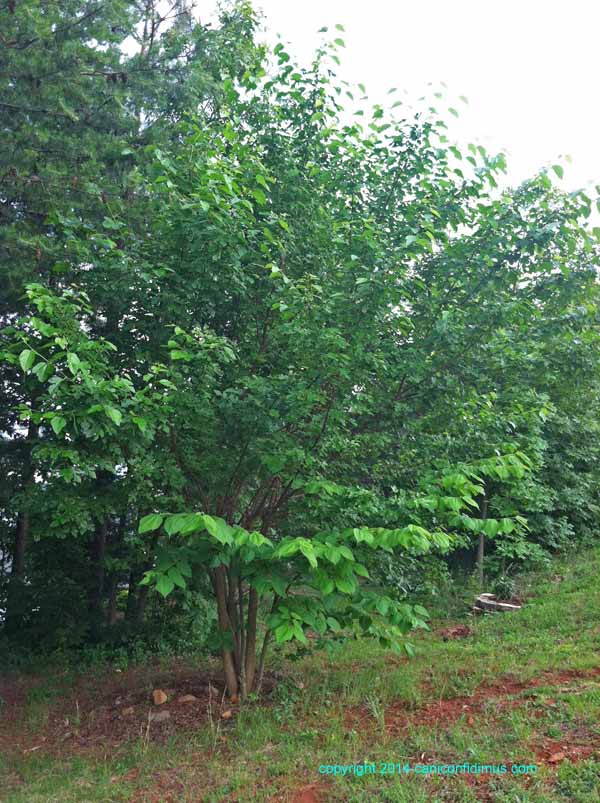
The Cinderella Hibiscus
Here you can see some of the fruit.
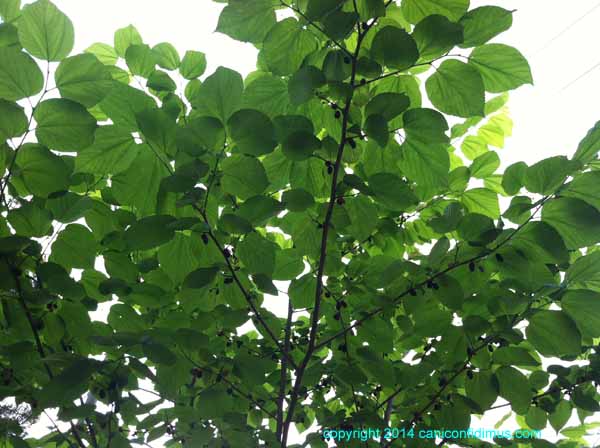
And one in my hand.
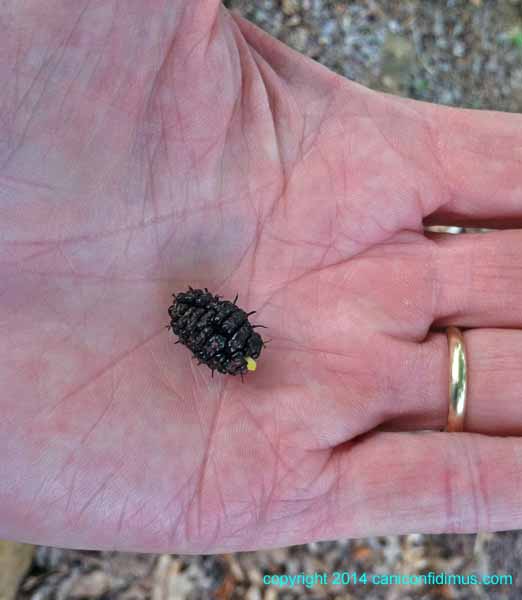
I find it odd that the mulberry leaf can take different shapes. It was a diagnostic feature for me, at least until I actually saw the fruit. Here is a leaf with no lobes.
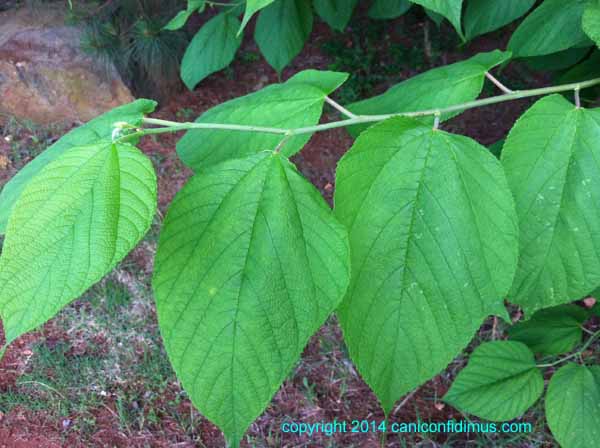 Here is a leaf with a lobe on one side.
Here is a leaf with a lobe on one side.
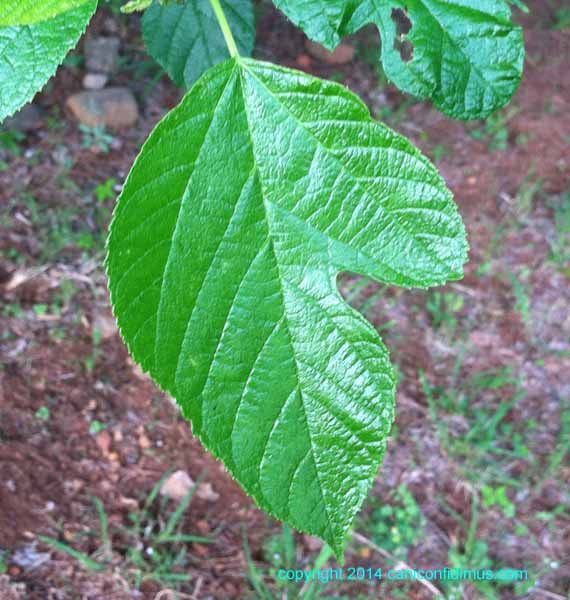 Here is a leaf with a lobe on both sides.
Here is a leaf with a lobe on both sides.
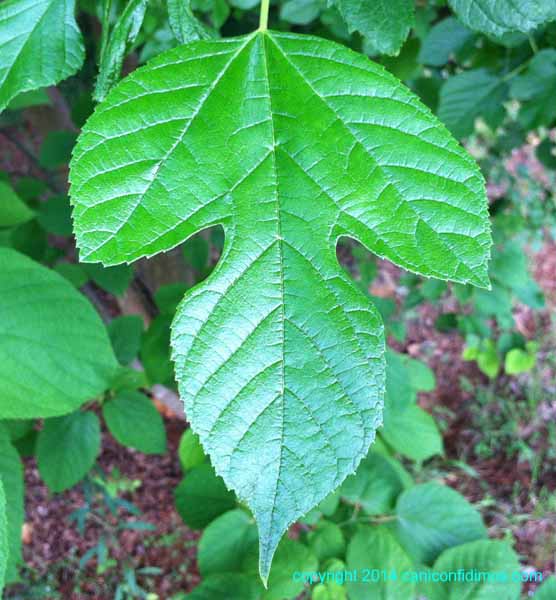
This fact is probably not surprising or odd to someone who knows much about plant biology, but that does not include me. If I am allowed to choose the subject of my plant ramblings and am asked no questions, it might appear that I know what I’m talking about, but I don’t really.
* The name comes from something that happened back when I was in graduate school and often visited my friend Errol and his family at their home north of Atlanta. One summer we (or they, I don’t remember) sat on their front porch and ate a watermelon. As is the custom, the seeds were spit out into the front yard. After a while, a vine appeared. Then a green melon-shaped fruit appeared and started growing. Of course we thought it had to be a watermelon. But one weekend when I came to visit, the watermelon had turned into a pumpkin. After that, I called it the Cinderella watermelon.